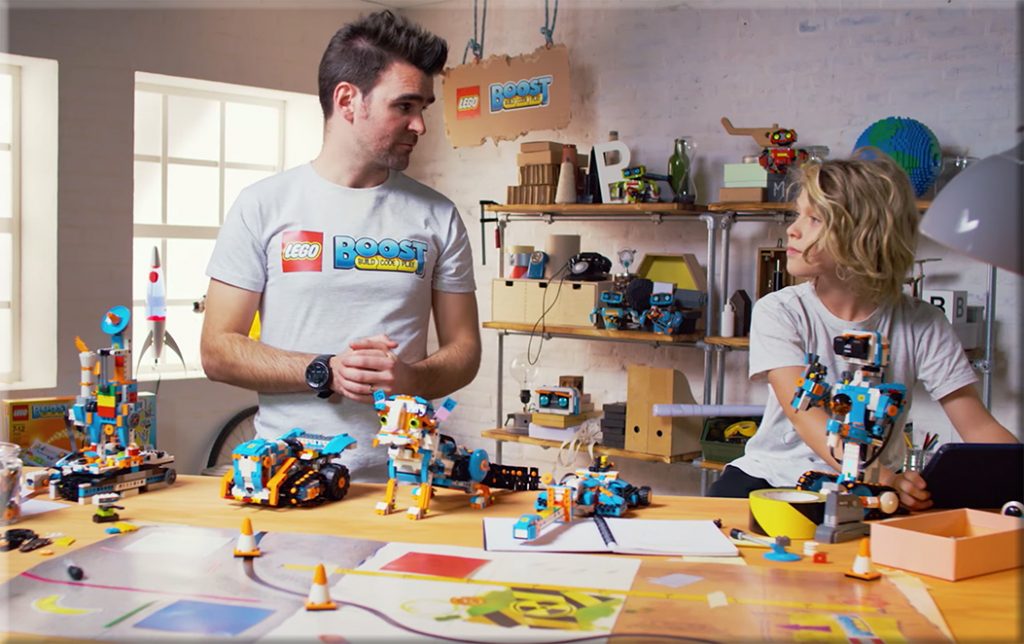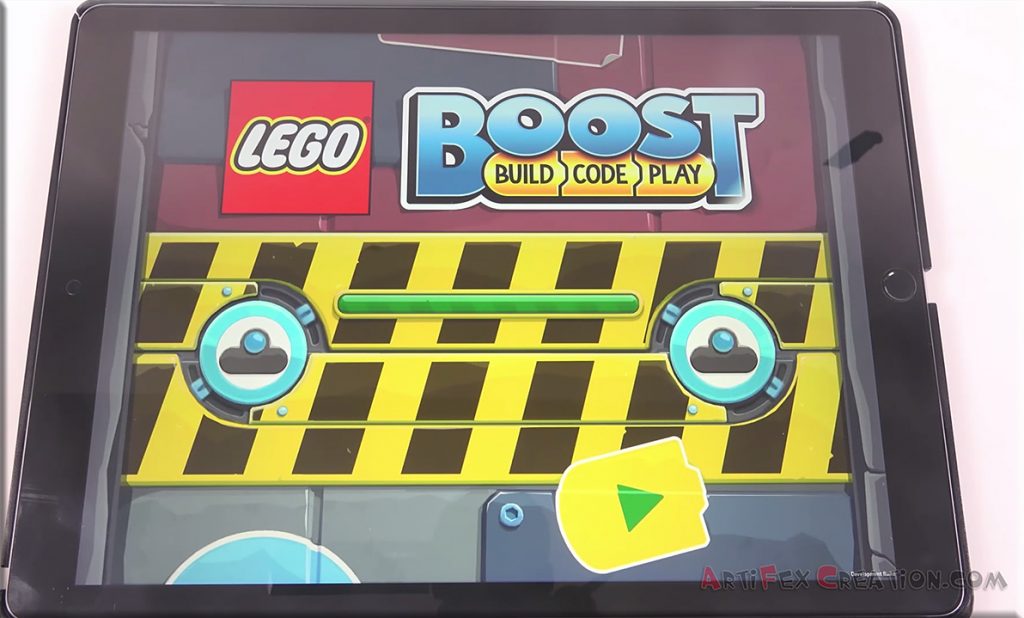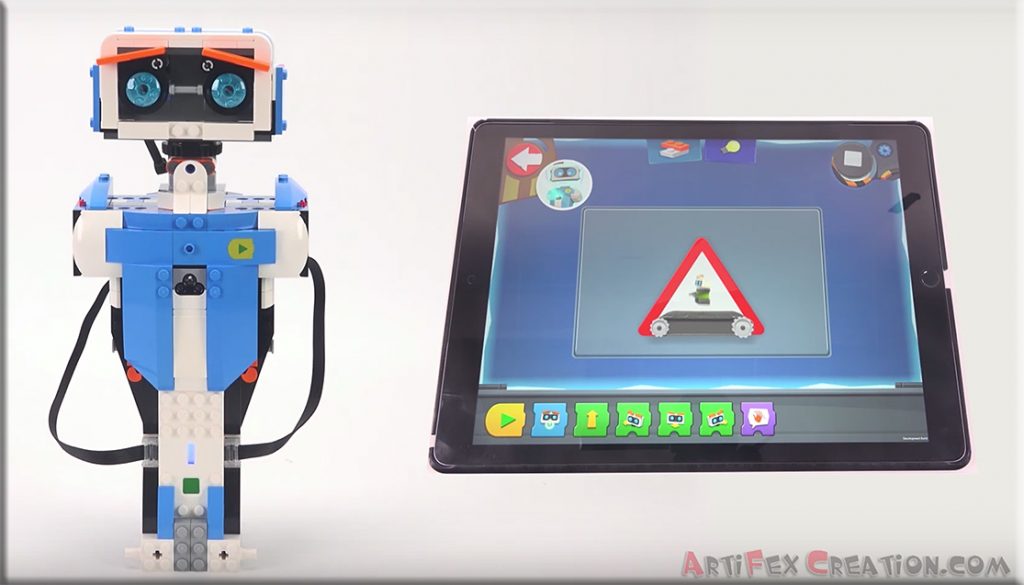From DSC:
Though we aren’t quite there yet, the pieces continue to come together to build a next generation learning platform that will help people reinvent themselves quickly, efficiently, constantly, and cost-effectively.





Learning for a Living — from MIT Sloan Mgmt Review by Gianpiero Petriglieri
Excerpt (emphasis DSC):
Calls for learning have long been common at corporate retreats, professional conferences, and similar gatherings. But with the furious pace of change that technology has brought to business and society, they have become more urgent. Leaders in every sector seem to agree: Learning is an imperative, not a cliché. Without it, careers derail and companies fail. Talented people flock to employers that promise to invest in their development whether they will stay at the company or not.
If we are after transformative learning, what we need is a familiar yet open frame — a playground of sorts that magnifies our habits and the culture that breeds them so that we can examine both, and imagine and try new ways of being.
A boot camp must replicate workplace constraints to help us master ways of navigating them more efficiently. Whether it’s a course on, say, reaping insights from data analytics or a training session on giving respectful feedback, the space supports practice and improvement. A playground must remove most constraints to promote experimentation. Providing some distance from day-to-day reality allows us to get real in a deeper sense. A boot camp amplifies and exploits the shame of learning, helping us learn how not to be found wanting. A playground exposes and challenges that shame, helping us realize that if we were less anxious, it might be easier to claim what we want and discover how to get it.
From DSC:
A heads up. The way they use the word bootcamp is different from the way I’ve heard that word used these last 5-7 years. I think of bootcamps as more along the lines of a 10-12 week, intensive course — often involving programming. I don’t see them as internal training courses. But this article uses the word bootcamp in that way.
2019 study of undergraduate students & information technology — from library.educause.edu
Excerpts:
Drawing on survey data from more than 40,000 students across 118 US institutions, this report highlights a number of important findings related to students’ technology preferences, supports, and experiences, with the goal of aiding technology and higher education professionals in improving student learning experiences and success.
…
But they want to be more than in-class spectators:
Figure 2. Student learning environment preferences for specific course-related activities and assignments
Recommendations
From DSC:
Well students…you might find that you have a major surprise ahead of you — as a significant amount of your future learning/training will take place completely online. Go ask some folks who have graduated about their onboarding experiences. Then go ask people who have been in the workplace for over a decade. You’ll see what I mean.
From DSC:
The other day, I put this post out there.
Now, I’d like to add to that information with information from Mr. Joseph Byerwalter, who pointed me to the following videos re: LEGO BOOST!
LEGO® BOOST lets children create models with motors and sensors, and then bring their creations to life through simple, icon-based coding commands. The free LEGO BOOST tablet app includes easy step-by-step building instructions for creating and coding multifunctional models.
P.S. I am not getting paid by LEGO or anyone else here.
I just think learning should be engaging and fun!







Addendum on 10/18/19:
Clay Shirky on Mega-Universities and Scale — from philonedtech.com by Clay Shirky
[This was a guest post by Clay Shirky that grew out of a conversation that Clay and Phil had about IPEDS enrollment data. Most of the graphs are provided by Phil.]
Excerpts:
Were half a dozen institutions to dominate the online learning landscape with no end to their expansion, or shift what Americans seek in a college degree, that would indeed be one of the greatest transformations in the history of American higher education. The available data, however, casts doubt on that idea.
Though much of the conversation around mega-universities is speculative, we already know what a mega-university actually looks like, one much larger than any university today. It looks like the University of Phoenix, or rather it looked like Phoenix at the beginning of this decade, when it had 470,000 students, the majority of whom took some or all of their classes online. Phoenix back then was six times the size of the next-largest school, Kaplan, with 78,000 students, and nearly five times the size of any university operating today.
From that high-water mark, Phoenix has lost an average of 40,000 students every year of this decade.
From DSC:
First of all, I greatly appreciate both Clay’s and Phil’s thought leadership and their respective contributions to education and learning through the years. I value their perspectives and their work. Clay and Phil offer up a great article here — one worth your time to read.
The article made me reflect on what I’ve been building upon and tracking for the last decade — a next generation ***PLATFORM*** that I believe will represent a powerful piece of a global learning ecosystem. I call this vision, “Learning from the Living [Class] Room.” Though the artificial intelligence-backed platform that I’m envisioning doesn’t yet fully exist — this new era and type of learning-based platform ARE coming. The emerging signs, technologies, trends — and “fingerprints”of it, if you will — are beginning to develop all over the place.
Such a platform will:
…
Below are some quotes that I want to comment on:
Not nothing, but not the kind of environment that will produce an educational Amazon either, especially since the top 30 actually shrank by 0.2% a year.
Instead of an “Amazon vs. the rest” dynamic, online education is turning into something much more widely adopted, where the biggest schools are simply the upper end of a continuum, not so different from their competitors, and not worth treating as members of a separate category.
Since the founding of William and Mary, the country’s second college, higher education in the U.S. hasn’t been a winner-take-all market, and it isn’t one today. We are not entering a world where the largest university operates at outsized scale, we’re leaving that world;
From DSC:
I don’t see us leaving that world at all…but that’s not my main reflection here. Instead, I’m not focusing on how large the mega-universities will become. When I speak of a forthcoming Walmart of Education or Amazon of Education, what I have in mind is a platform…not one particular organization.
Consider that the vast majority of Amazon’s revenues come from products that other organizations produce. They are a platform, if you will. And in the world of platforms (i.e., software), it IS a winner take all market.
Bill Gates reflects on this as well in this recent article from The Verge:
“In the software world, particularly for platforms, these are winner-take-all markets.
So it’s all about a forthcoming platform — or platforms. (It could be more than one platform. Consider Apple. Consider Microsoft. Consider Google. Consider Facebook.)
But then the question becomes…would a large amount of universities (and other types of organizations) be willing to offer up their courses on a platform? Well, consider what’s ALREADY happening with FutureLearn:
Finally…one more excerpt from Clay’s article:
Eventually the new ideas lose their power to shock, and end up being widely copied. Institutional transformation starts as heresy and ends as a section in the faculty handbook.
From DSC:
This is a great point. Reminds me of this tweet from Fred Steube (and I added a piece about Western Telegraph):
Why would anyone need a telephone when we already have the telegraph? [Western Telegraph] https://t.co/s6Rm67NAB0
— Daniel Christian (@dchristian5) May 23, 2019
Some things to reflect upon…for sure.
The finalized 2019 Horizon Report Higher Education Edition (from library.educause.edu) was just released on 4/23/19.
Excerpt:
Key Trends Accelerating Technology Adoption in Higher Education:
Short-Term—Driving technology adoption in higher education for the next one to two years
Mid-Term—Driving technology adoption in higher education for the next three to five years
Long-Term—Driving technology adoption in higher education for five or more years
6 key trends to 21st century teaching — from edsurge.com
Excerpt:
It’s popular these days to complain that college teaching hasn’t changed in hundreds of years. And sure, it’s possible to find some professors on any campus holding yellowed lecture notes, or clinging to dusty chalk. But the reality is that the internet and digital technologies have already brought profound changes to instructional styles and tools in higher education.
So what are the new teaching approaches catching on at today’s campuses? And what are the broader cultural changes around college teaching?
We set out to answer those questions over the past year, with a series of articles and interviews exploring what teaching in the 21st century looks like. Some show the nuances of the challenges of teaching with technology by telling stories of innovative professors, including how a water agency official who teaches an online community college course got started in creating open educational resources when her class was incorporated into a zero-cost textbook degree program. Others dive into research on the culture of teaching, like a talk with an anthropologist studying how professors react to (and sometimes resist) research on teaching practices.
Assessment for Learning: It Just Makes Sense — from facultyfocus.com by Cathy Box
Excerpt:
Assessment for Learning (AfL), sometimes referred to as “formative assessment” has become part of the educational landscape in the U.S. and is heralded to significantly raise student achievement, yet we are often uncertain what it is and what it looks like in practice in higher education. To clarify, AfL includes the formal and informal processes that faculty and students use during instruction to gather evidence for the purpose of improving learning. The aim of AfL is to improve students’ mastery of the content and to equip and empower them as self-regulated, life-long learners.
There are many strategies that serve the purposes of AfL, commonly centered around three questions: 1) Where am I going? 2) Where am I now? and 3) How can I close the gap? (Chappuis, 2015; Sadler, 1989; Wiliam, 2011). This process represents a natural progression from the beginning of a lesson to closing the learning gaps at the end and provides a recursive loop when necessary. The following narrative describes two AfL strategies that I have found work extremely well in my courses, resulting in higher quality work, leaving me time to provide feedback on the more challenging aspects of the assignment. These strategies fall under the question “Where am I going?” and are true to the tenets of AfL, having a significant impact on learning and putting students squarely in the driver’s seat.
“Indeed as one of the most prolific writers on the topic, Alfie Kohn suggested, ‘assessment should be an unobtrusive servant of teaching and learning.’ (source)
Forecast 5.0 – The Future of Learning: Navigating the Future of Learning — from knowledgeworks.org by Katherine Prince, Jason Swanson, and Katie King
Discover how current trends could impact learning ten years from now and consider ways to shape a future where all students can thrive.
Can space activate learning? UC Irvine seeks to find out with $67M teaching facility — from edsurge.com by Sydney Johnson
Excerpt:
When class isn’t in session, UC Irvine’s shiny new Anteater Learning Pavillion looks like any modern campus building. There are large lecture halls, hard-wired lecture capture technology, smaller classrooms, casual study spaces and brightly colored swivel chairs.
But there’s more going on in this three-level, $67-million facility, which opened its doors in September. For starters, the space is dedicated to “active learning,” a term that often refers to teaching styles that go beyond a one-way lecture format. That could range from simply giving students a chance to pause and discuss with peers, to role playing, to polling students during class, and more.
To find out what that really looks like—and more importantly, if it works—the campus is also conducting a major study over the next year to assess active learning in the new building.
From DSC:
The picture below was posted in the item below from edutopia. What a powerful picture! And not just for art or drama teachers!
Does it not once again illustrate that we are different? The lenses that we view the world through are different. Our learners are different. Each of us comes to a learning experience with different backgrounds, emotions, knowledge…and different real-life experiences.
As the article mentions, we need to create safe and supportive learning environments, where the love of (or at least the enjoyment of) learning can thrive.
Getting creative with social and emotional learning (SEL) — from by Maurice Elias, Sara LaHayne
How to incorporate creative expression and movement in the classroom while building social and emotional learning skills.
Excerpt:
Being creative is an inherently vulnerable process. In order to authentically build SEL competencies through creative expression, teachers need to strive to create a safe space, provide time, and open doors for validation.
LinkedIn Learning Opens Its Platform (Slightly) — from edsurge by Jeff Young
Excerpt (emphasis DSC):
A few years ago, in a move toward professional learning, LinkedIn bought Lynda.com for $1.5 billion, adding the well-known library of video-based courses to its professional social network. Today LinkedIn officials announced that they plan to open up their platform to let in educational videos from other providers as well—but with a catch or two.
The plan, announced Friday, is to let companies or colleges who already subscribe to LinkedIn Learning add content from a select group of other providers. The company or college will still have to subscribe to those other services separately, so it’s essentially an integration—but it does mark a change in approach.
For LinkedIn, the goal is to become the front door for employees as they look for micro-courses for professional development.
LinkedIn also announced another service for its LinkedIn Learning platform called Q&A, which will give subscribers the ability to pose a question they have about the video lessons they’re taking. The question will first be sent to bots, but if that doesn’t yield an answer the query will be sent on to other learners, and in some cases the instructor who created the videos.
Also see:
LinkedIn becomes a serious open learning experience platform — from clomedia.com by Josh Bersin
LinkedIn is becoming a dominant learning solution with some pretty interesting competitive advantages, according to one learning analyst.
Excerpt:
LinkedIn has become quite a juggernaut in the corporate learning market. Last time I checked the company had more than 17 million users, 14,000 corporate customers, more than 3,000 courses and was growing at high double-digit rates. And all this in only about two years.
And the company just threw down the gauntlet; it’s now announcing it has completely opened up its learning platform to external content partners. This is the company’s formal announcement that LinkedIn Learning is not just an amazing array of content, it is a corporate learning platform. The company wants to become a single place for all organizational learning content.
LinkedIn now offers skills-based learning recommendations to any user through its machine learning algorithms.
Is there demand for staying relevant? For learning new skills? For reinventing oneself?
From DSC:
So…look out higher ed and traditional forms of accreditation — your window of opportunity may be starting to close. Alternatives to traditional higher ed continue to appear on the scene and gain momentum. LinkedIn — and/or similar organizations in the future — along with blockchain and big data backed efforts may gain traction in the future and start taking away some major market share. If employers get solid performance from their employees who have gone this route…higher ed better look out.
Microsoft/LinkedIn/Lynda.com are nicely positioned to be a major player who can offer society a next generation learning platform at an incredible price — offering up-to-date, microlearning along with new forms of credentialing. It’s what I’ve been calling the Amazon.com of higher ed (previously the Walmart of Education) for ~10 years. It will take place in a strategy/platform similar to this one.
Also, this is what a guerilla on the back looks like:
Also see:
From DSC:
Microsoft’s conference room of the future “listens” to the conversations of the team and provides a transcript of the meeting. It also is using “artificial intelligence tools to then act on what meeting participants say. If someone says ‘I’ll follow up with you next week,’ then they’ll get a notification in Microsoft Teams, Microsoft’s Slack competitor, to actually act on that promise.”
This made me wonder about our learning spaces in the future. Will an #AI-based device/cloud-based software app — in real-time — be able to “listen” to the discussion in a classroom and present helpful resources in the smart classroom of the future (i.e., websites, online-based databases, journal articles, and more)?
Will this be a feature of a next generation learning platform as well (i.e., addressing the online-based learning realm)? Will this be a piece of an intelligent tutor or an intelligent system?
Hmmm…time will tell.
Also see this article out at Forbes.com entitled, “There’s Nothing Artificial About How AI Is Changing The Workplace.”
Here is an excerpt:
The New Meeting Scribe: Artificial Intelligence
As I write this, AI has already begun to make video meetings even better. You no longer have to spend time entering codes or clicking buttons to launch a meeting. Instead, with voice-based AI, video conference users can start, join or end a meeting by simply speaking a command (think about how you interact with Alexa).
Voice-to-text transcription, another artificial intelligence feature offered by Otter Voice Meeting Notes (from AISense, a Zoom partner), Voicefox and others, can take notes during video meetings, leaving you and your team free to concentrate on what’s being said or shown. AI-based voice-to-text transcription can identify each speaker in the meeting and save you time by letting you skim the transcript, search and analyze it for certain meeting segments or words, then jump to those mentions in the script. Over 65% of respondents from the Zoom survey said they think AI will save them at least one hour a week of busy work, with many claiming it will save them one to five hours a week.
15 more companies that no longer require a degree — apply now — from glassdoor.com
Excerpt:
With college tuition soaring nationwide, many Americans don’t have the time or money to earn a college degree. However, that doesn’t mean your job prospects are diminished. Increasingly, there are many companies offering well-paying jobs to those with non-traditional education or a high-school diploma.
…
Google and Ernest & Young are just two of the champion companies who realize that book smarts don’t necessarily equal strong work ethic, grit and talent. Whether you have your GED and are looking for a new opportunity or charting your own path beyond the traditional four-year college route, here are 15 companies that have said they do not require a college diploma for some of their top jobs.
From DSC:
Several years ago when gas prices were sky high, I couldn’t help but think that some industries — though they were able to grab some significant profits in the short term — were actually shooting themselves in the foot for the longer term. Sure enough, as time went by, people started looking for less expensive alternatives. For example, they started buying more hybrid vehicles, more electric cars, and the sales of smaller cars and lighter trucks increased. The average fuel economy of vehicles went up (example). The goal was to reduce or outright eliminate the number of trips to the gas station that people were required to make.
These days…I wonder if the same kind of thing is happening — or about to happen — with traditional institutions of higher education*? Are we shooting ourselves in the foot?
Traditional institutions of higher education better find ways to adapt, and to change their game (so to speak), before the alternatives to those organizations gain some major steam. There is danger in the status quo. Count on it. The saying, “Adapt or die” has now come to apply to higher ed as well.
Faculty, staff, and administrators within higher ed are beginning to experience what the corporate world has been experiencing for decades.
Faculty can’t just teach what they want to teach. They can’t just develop courses that they are interested in. The demand for courses that aren’t attractive career-wise will likely continue to decrease. Sure, it can be argued that many of those same courses — especially from the liberal arts colleges — are still valuable…and I would agree with some of those arguments. But the burden of proof continues to be shifted to the shoulders of those proposing such curricula.
Also, the costs of obtaining a degree needs to come down or:
The current trends are paving the way for a next generation learning platform that will serve someone from cradle to grave.
* I realize that many in higher ed would immediately dispute that their organizations are out to grab short term profits, that they don’t operate like a business, that they don’t operate under the same motivations as the corporate world, etc. And I can see some of these folks’ points, no doubt. I may even agree with some of the folks who represent organizations who freely share information with other organizations and have motivations other than making tons of money. But for those folks who staunchly hold to the belief that higher ed isn’t a business at all — well, for me, that’s taking things way too far. I do not agree with that perspective at all. One has to have their eyes (and minds) closed to cling to that perspective anymore. Just don’t ask those folks to tell you how much their presidents make (along with other higher-level members of their administrations), the salaries of the top football coaches, or how many millions of dollars many universities’ receive for their television contracts and/or their ticket sales, or how much revenue research universities bring in from patents and so on and so forth.
Addendum on 8/24, per University Ventures e-newsletter
2. Facebook Goes Back to College (emphasis DSC)
TechCrunch report on how digital giants are buying into Last-Mile Training by partnering with Pathstream to deliver necessary digital skills to community college students.
Most good first jobs specifically require one or more technologies like Facebook or Unity — technologies that colleges and universities aren’t teaching. If Pathstream is able to realize its vision of integrating industry-relevant software training into degree programs in a big way, colleges and universities have a shot at maintaining their stranglehold as the sole pathway to successful careers. If Pathstream’s impact is more limited, watch for millions of students to sidestep traditional colleges, and enroll in emerging faster and cheaper alternative pathways to good first jobs — alternative pathways that will almost certainly integrate the kind of last-mile training being pioneered by Pathstream.
America’s colleges and universities could learn a thing or two from Leo, because they continue to resist teaching students the practical things they’ll need to know as soon as they graduate; for instance, to get jobs that will allow them to make student loan payments. Digital skills head this list, specifically experience with the high-powered software they’ll be required to use every day in entry-level positions.
But talk to a college president or provost about the importance of Marketo, HubSpot, Pardot, Tableau, Adobe and Autodesk for their graduates, and they’re at a loss for how to integrate last-mile training into their degree programs in order prepare students to work on these essential software platforms.
Enter a new company, Pathstream, which just announced a partnership with tech leader Unity and previously partnered with Facebook. Pathstream supports the delivery of career-critical software skill training in VR/AR and digital marketing at colleges and universities.
Addendum on 8/24, per University Ventures e-newsletter
3. Faster + Cheaper Alternatives to College
Inside Higher Education Q&A on upcoming book A New U: Faster + Cheaper Alternatives to College.
Last-mile training is the inevitable by-product of two crises, one generally understood, the other less so. The crisis everyone understands is affordability and unsustainable levels of student loan debt. The other crisis is employability. Nearly half of all college graduates are underemployed in their first job. And we know that underemployment is pernicious and lasting. According to the recent report from Strada’s Institute for the Future of Work, two-thirds of underemployed graduates remain underemployed five years later, and half remain underemployed a decade later. So today’s students no longer buy that tired college line that “we prepare you for your fifth job, not your first job.” They know that if they don’t get a good first job, they’re probably not going to get a good fifth job. As a result, today’s students are laser-focused on getting a good first job in a growing sector of the economy.